
Background information
Show me your flower pot and I'll tell you who you are
by Stefanie Lechthaler

My plants and I are moving. Their new home will be a pot with drainage; mine a place in the countryside. It’s an adventure full of dirt and stubborn roots.
I’m currently getting ready to move all my belongings into a new home. While emptying cupboards and packing boxes, I spot my aloe vera plant in its far too small pot. It’s been stuck in this corset for over two years now.
Embarrassingly, I’ve never repotted any of my plants in the last few years, although it’s something that should be done every two to three years. Naively, I thought they’d adapt to the pot size. Not even their yellow-spotted leaves made me realise their soil’s nutrients had been used up. It was all too obvious.
Well, better late than never, right? So I decided my plants are also ready for a new home.
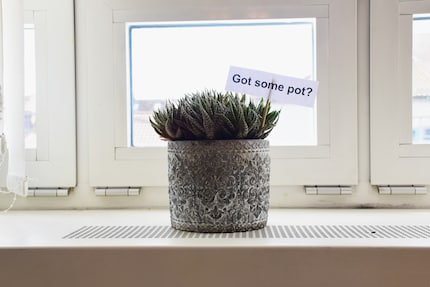
The housing market for plants is a dream compared to the one for humans. My cellar is full of pots in all shapes and sizes. And Galaxus also sells plenty, including quite a few unusual ones, as my colleague Stefanie Lechthaler discovered:
After a quick viewing, the rental contracts are signed. But I didn’t read the small print. Turns out none of my pots have drainage holes. I read everywhere that plants need drainage, as waterlogging can cause their roots to rot. So should I buy new pots now or drill holes into the old ones, risking to break them? Wait, I’m planning to move out, not demolish buildings. Having said that, when I think of my letting agency...
No, I’m not into destroying things. And as always, if I google long enough, I always find what I want to hear. There we go: I find an article that says dry-loving succulents don’t necessarily need holes, but drainage. So what does that mean? We’ll find out later.
First, my plants need to move out of their current home. The removal company is quickly found. Surprise – it’s me. So on Maundy Thursday – sorry for the noise, neighbours – I spread out a potting tarp on my living room floor. It’ll catch all the dirt. One of the best inventions for city apartments without a balcony or garden.
Because I’ve known myself for over 30 years, I’m expecting a messy move. So I put on my swimwear – no joke – and sit down on the potting tarp, with my aloe plant on my lap. It’s a strange scene and no, there’s no photographic evidence. Of course, I could’ve just left my regular clothes on and washed them after the whole repotting mess. But somehow all that sand made me feel like dressing for the beach.
I start by gently pulling, twisting and shaking the stem of the aloe. Nothing’s happening. It seems to be reluctant to leave its old home. After a few attempts, I grab a spoon and glide the handle along the edge of the pot. There’s a lot of cracking. I’ve either just killed my aloe or rescued it from it’s tight shell. The latter’s the case – the roots glide out of the pot.
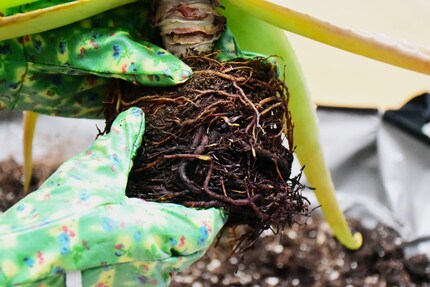
When I see the tangled roots twisting around their own axis several times, I realise repotting this plant was long overdue. I carefully untangle the mess and trim back thick, overlong and lazy-looking roots. After all, moving always means getting rid of things that no longer serve you.
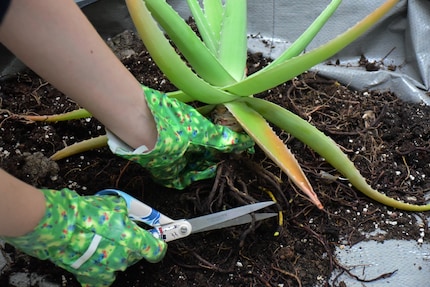
While my little plant gets a quick breather, I turn to the furnishing – my favourite part of moving aka repotting. According to the description in the article I read, the drainage goes in the very bottom of the pot. In other words, water needs to be able to drain to the bottom of the pot. I fill about one fifth of the pot with expanded clay. For repotting amateurs like me, expanded clay aggregate refers to those brown balls of baked clay that absorb water.
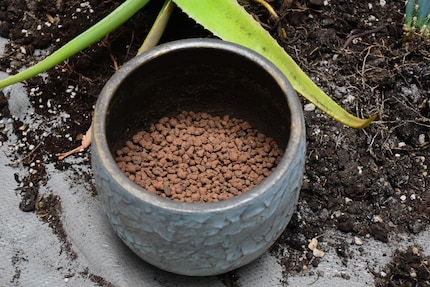
I cover the clay with separating fleece. As the name suggests, it separates the expanded clay from the soil above it, making sure the two don’t mix. As I quickly realise, the fleece sheet is huge, so I need to cut it to size first. I place it on the edge of the pot and cut out a round piece with scissors. Then I gently press the round cut-out onto the expanded clay.
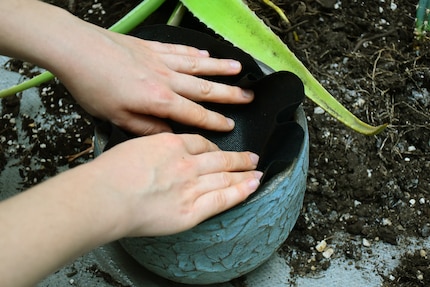
Now to the main furniture for my aloe’s new home – the soil. Unfortunately, Galaxus doesn’t sell special succulent or cactus soil (the category management team’s been informed). As I recently learned on a tour of Kakteen Gautschi GmbH garden centre, cactus soil should be as airy and heterogeneous as possible.
This means it shouldn’t crumble evenly between the fingers, but consist of some finer and some coarser elements, like gravel, for example. I found this kind of soil at online plant shop Feey. The aloe then got to give her new bed a go – no reaction. I interpret that as «Cool, I like that!»

You think we’re done? Nope, the icing on the cake is still missing – the sand. Why? It’s simple. When I started growing indoor herbs last year, a whole host of fungus gnats moved in with the soil. This is my chance to get rid of these unwelcome guests. The Galaxus Community told me to add a layer of sand to the plant soil to make it harder for the goddam critters to reproduce.
But which sand to use? The decorative sand that’s gathering dust in my attic? Not a great idea. I tested it and the layer of sand turned hard and almost impenetrable. That’s kind of what happened when I bought regular plant soil from wholesalers in the past. I’ve found better, more permeable products – aquarium sand and gravel. And that’s it, the new home’s furnished.
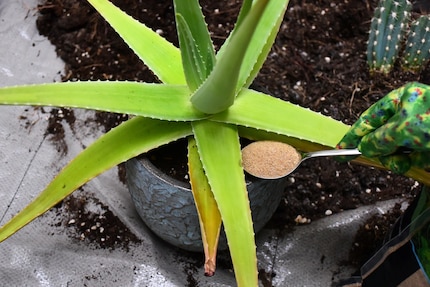
My houseplants have been settling into their new homes for just over a week now. No complaints so far. The Pachira aquatica has already produced offspring in its new clay walls. The sand did mix with the soil after watering, but that’s fine as long as it keeps gnats away and doesn’t go hard. And fingers crossed the drainage’s working. I’ll know more in the next few weeks. But first I need to get packing myself. After all, I still have that massive move ahead.

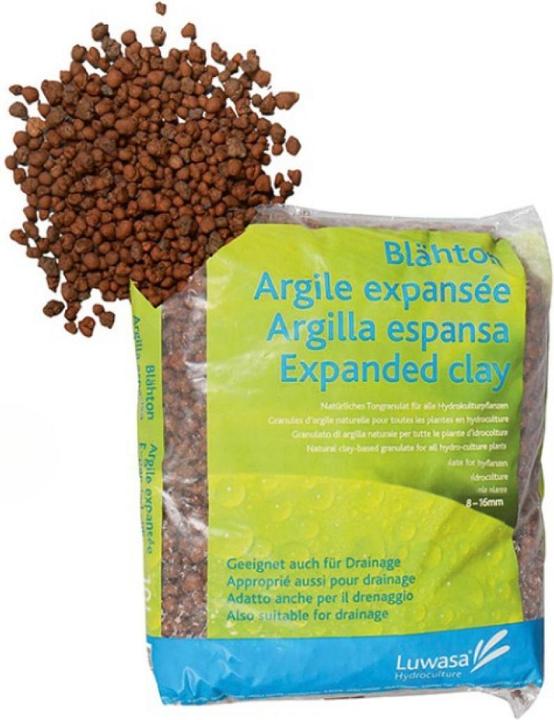
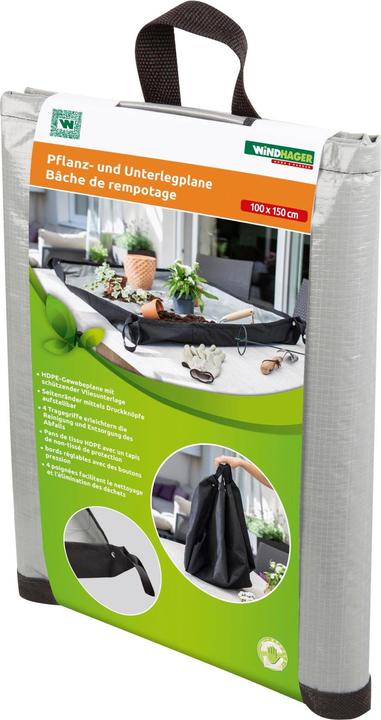
Windhager Planting and underlay tarpaulin

Windhager Separating fleece for pots
What’s your experience with repotting and drainage? Let me know in the comments!
I love anything with four legs or roots - especially my shelter cats Jasper and Joy and my collection of succulents. My favourite things to do are stalking around with police dogs and cat coiffeurs on reportages or letting sensitive stories flourish in garden brockis and Japanese gardens.
Practical solutions for everyday problems with technology, household hacks and much more.
Show all